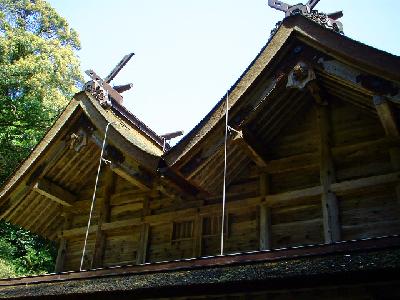Miho Shrine is in Matsue, Shimane Prefecture and is dedicated to two deities, Mihotsuhimenomikoto and Kotoshironushinokami. Miho Shrine is built in a special way called ‘Miho tsukuri (Miho construction)’ also know as ‘Hiyoku Taisha tsukuri’ and is unique in the way it arranges two ‘Taisha Tsukuri’ (an architectural style for shrines). Another reason why the Miho shrine is distinctive from other shrines is that it uses thick boards of cypress bark shingles (called ‘Tomogawa-jyabara’) and assembles them in layers by nails made out of bamboo to create the shrine’s roof. (This type of roof is called ‘Hiwadabuki’.) Both the Tomogawa-jyabara and the Hiwadabuki are designated Important Cultural Properties. Mihotsuhimenomikoto is Ookuninushi’s (another Shinto deity) queen and is the guardian goddess of agriculture and enduring prosperity. Kotoshironushinokami is the first prince of Ookuninushi and is the guardian of occupations such as fishing and commerce. Miho Shrine is also the head office for a total of 3,385 Ebisu companies around Japan and is respected by people in the fishing and shipping business. A total of 846 musical instruments have been dedicated to the Miho Shrine and have been designated Important National Folk Cultural Properties. The instruments include the oldest accordion in Japan; a shamisen (a three-stringed Japanese instrument) used by the first Ogieroyu (a famous musician during the Edo era) and many other rare and valuable artifacts.














